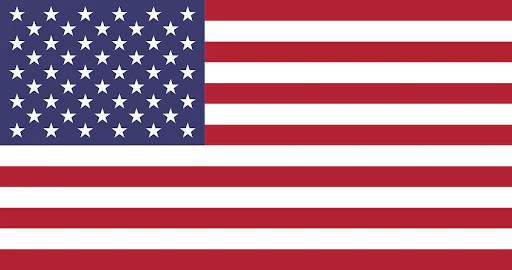Health Tips for Spring Cleaning
Spring is about to come! Are you ready for Spring cleaning? After the long and gloomy winter, thorough cleaning of your home or workplace can be a great start for the year. There are a lot of things you need to do for this big project: dusting, washing windows, decluttering, organizing, and getting rid of items no longer needed...You had better make a plan in advance. And there is one more thing you should be aware of before settling down to it--the hazards during cleaning. Yes, you are hearing me right. The process of house cleaning can expose you to several lurking health risks. Read on to see what you must be careful with.
Cleaning products
Cleaning products, especially traditional cleaning products, can be the most threatening factor to your health during cleaning. Many of them contain chemicals that can be harmful if inhaled or absorbed through the skin. They can cause respiratory problems, skin irritation, and other health problems. Studies have shown that the use of cleaning products can lead to a distinct decline in lung function, and people who were exposed to these products every day can have a rapid rate of lung function decline.
Aside from hazardous chemicals, Many traditional cleaning products have a strong odor that can be overwhelming and also irritates your airway and cause respiratory problems like asthma or other health problems.
Moreover, Traditional cleaning products can leave a residue on surfaces if not well cleaned, which can be harmful if ingested or cause skin irritation.
Besides, Traditional cleaning products can also be harmful to the environment and can contribute to water pollution and air pollution.
Then how should we avoid these disadvantages and risks?
Firstly, we can switch to eco-friendly cleaning products. Be aware that even if some products are tagged with or advertised as green, natural, or eco-friendly, some of the ingredients may still lead to certain health problems. That’s why you should learn to read the labels and choose products that do not contain or have reduced amounts of volatile organic compounds (VOCs), fragrances, chemicals, and flammable ingredients. To further insure the safety of products, you can refer to the list of products that meet its Safer Choice requirements for cleaning and other needs provided by the U.S. Environmental Protection Agency.
Secondly, you should wear gloves and masks to protect your skin from harsh chemicals and avoid inhaling any fumes and airborne toxins.
Thirdly, use proper ventilation. When using cleaning products, especially with strong odors(having no odor doesn’t necessarily mean there are no hazardous chemicals), make sure to have the windows and doors open to let in the fresh air and improve ventilation. Otherwise, those chemicals will have nowhere to go but accumulate in your room.
It is also a good idea to drink plenty of water to stay hydrated so that you can flush out toxins.
If you still have worries about the chemicals in any kinds of cleaning products, why not try something more old-fashioned? Warm water and soap are capable of cleaning most of the surfaces at home. Baking soda is good for scrubbing, and the mix of vinegar and water can clean glass. These are all safer alternatives for cleaning products.
Finally, after you have done all the cleaning, don’t forget to store cleaning supplies safely, and keep chemicals out of reach of children and pets.
With the tips listed above, you should be able to avoid the disadvantages of cleaning products and enjoy a healthier, more sustainable, and more effective cleaning experience.
Allergens during cleaning
Cleaning usually stirs up dust and other allergens that can cause symptoms such as sneezing, itching, and runny nose. In worse cases, they even cause asthma symptoms. Here are some tips to minimize allergens during cleaning:
Wear a mask: Wear a mask while cleaning to reduce your exposure to allergens in the air.
Vacuum regularly: Vacuum regularly to remove dust and pet dander from floors, furniture, and upholstery. Use a vacuum with a HEPA filter to trap tiny allergens.
Damp cloth: clean dusty surfaces with a damp cloth to trap dust and prevent it from becoming airborne.
Avoid feather dusters: Feather dusters cannot collect dust. They only remove the dust off the surfaces and spread it into the air rather than actually cleaning them.
Wash bedding: Wash bedding, curtains, and other fabric items regularly to remove allergens that may have accumulated.
Use an air purifier: Use an air purifier with a HEPA filter to remove allergens from the air.
Clean floors last: Clean floors last to avoid stirring up dust and other allergens that have settled on surfaces.
By following these tips, you can minimize allergens during cleaning, reducing the risk of allergy symptoms and ensuring a cleaner and healthier home.
Other health risks
There are some other health tips that can make your cleaning experience and result better:
Take breaks: Cleaning can be physically demanding, so take regular breaks to avoid fatigue and strain.
Clean frequently-touched surfaces: Pay special attention to frequently-touched surfaces, such as doorknobs, light switches, and countertops, to reduce the spread of germs.
Wash your hands: After cleaning, wash your hands with soap and water for at least 20 seconds to remove dirt, germs, and residue from cleaning products.
Be careful not to slip, trip, or fall. Loose rugs, cluttered floors, and slippery surfaces can increase the risk of falls, especially when you do the cleaning. Make sure to secure loose rugs, keep floors clear, and use non-slip mats in the bathroom.












Dejar un comentario